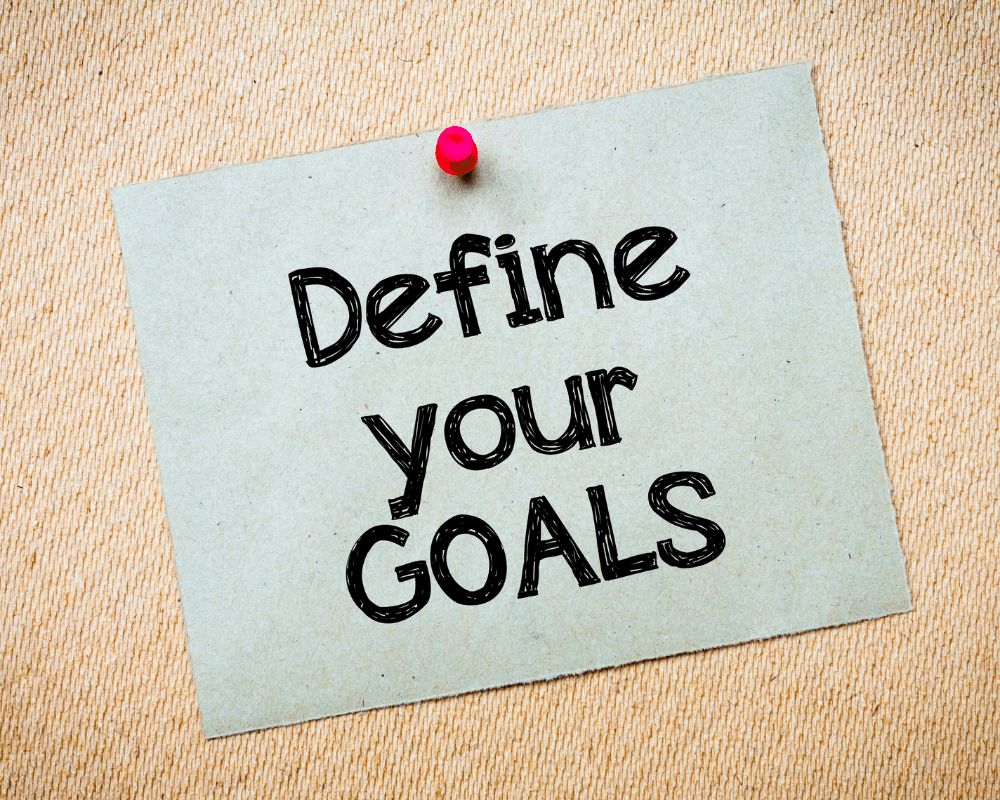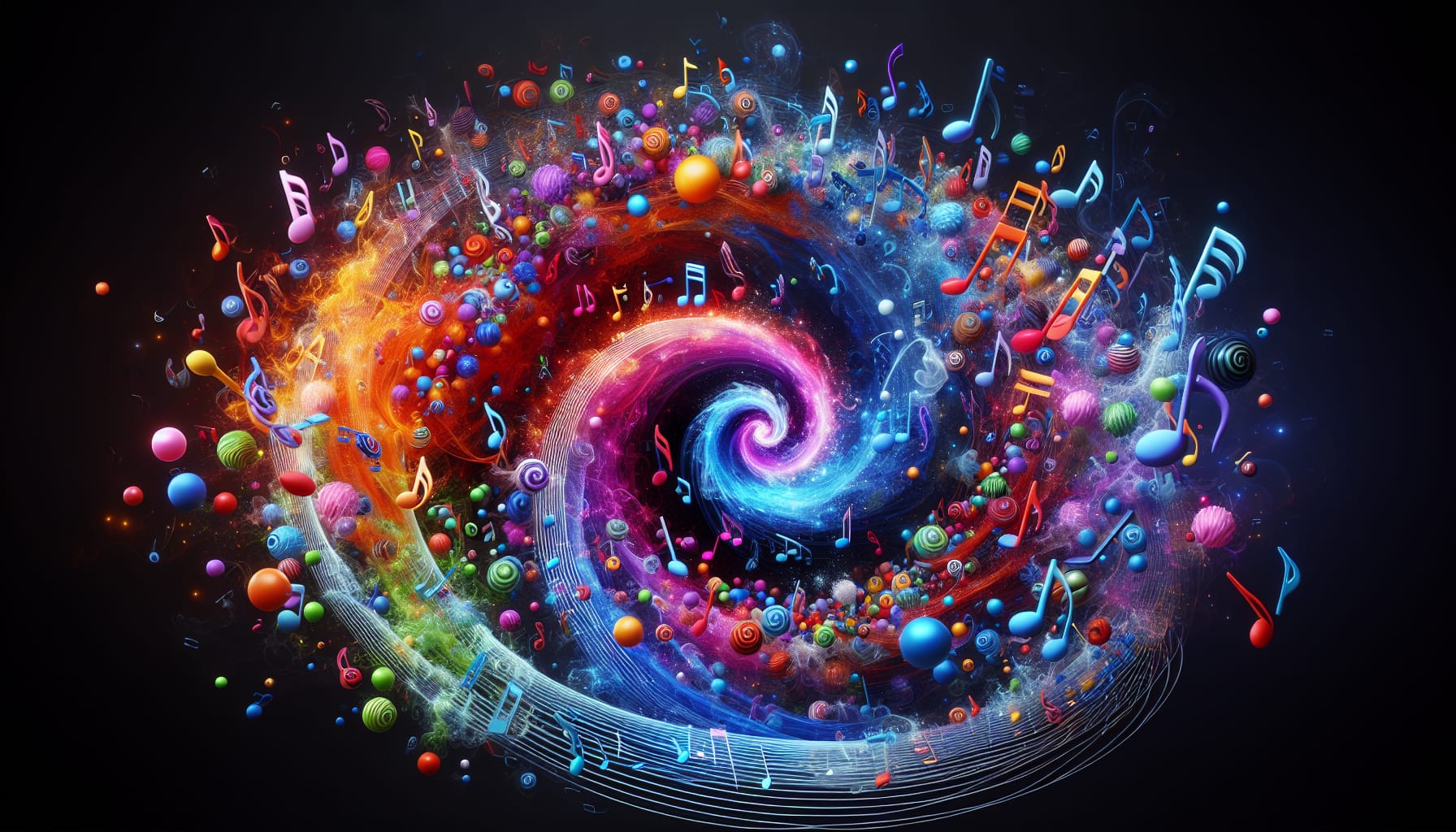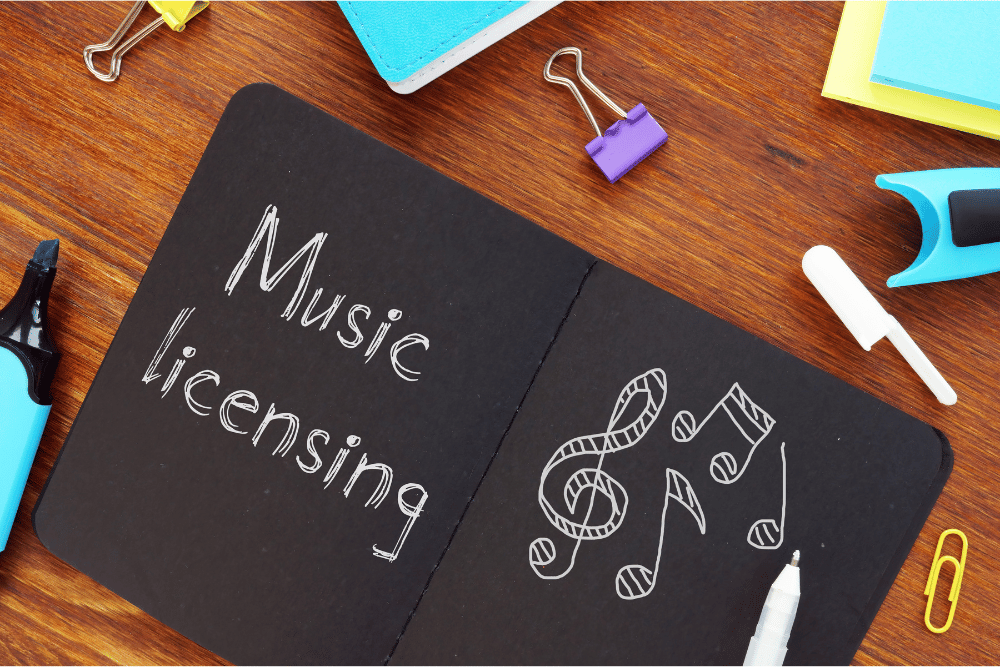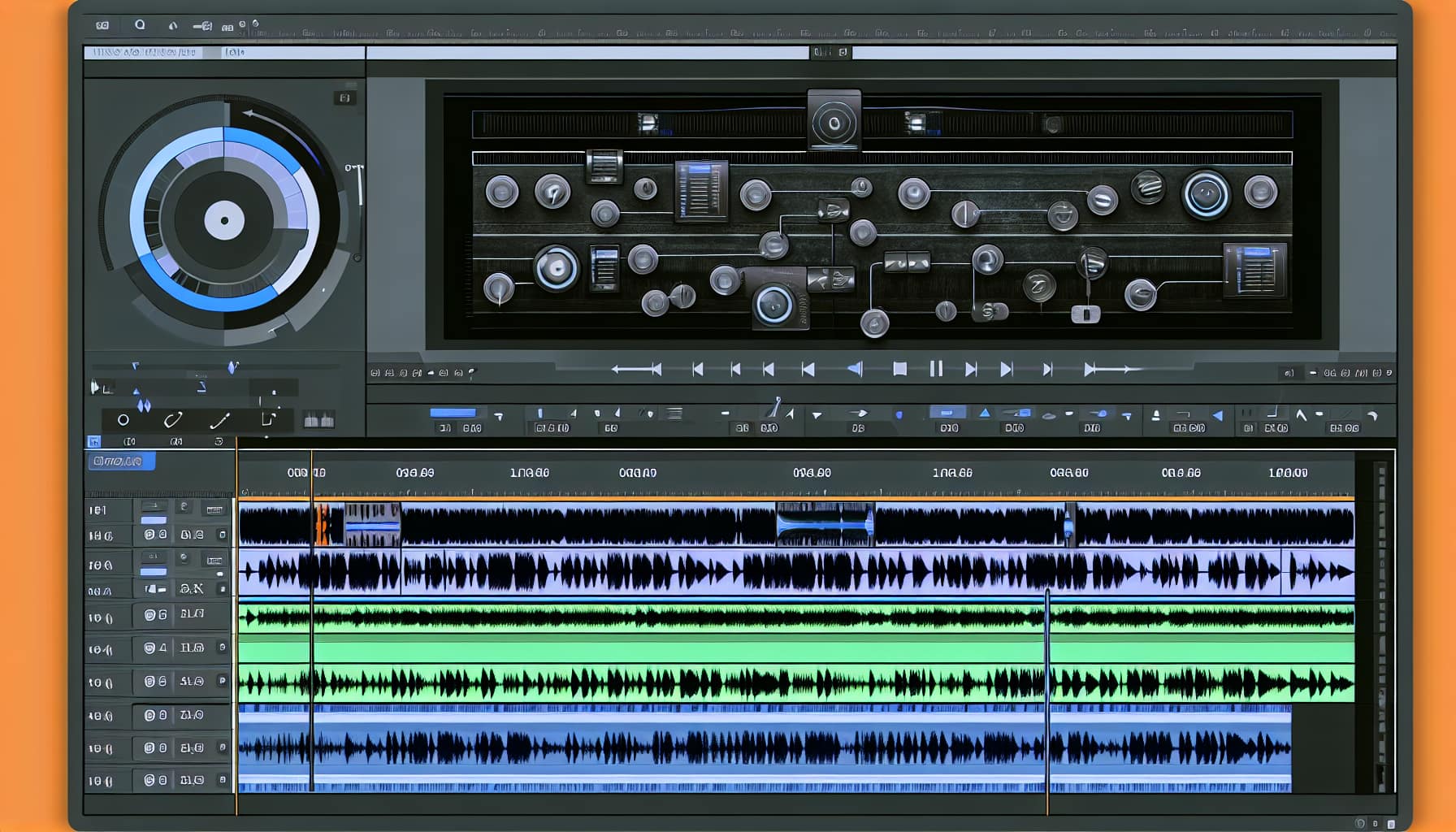
So You’ve made a great video, you’re happy with the content, the visuals are looking great, you know when t’s published it’s going to really help people but you have a few nagging doubts. Usually, more often than not it’s about the audio or in particular the video soundtrack.
You might be asking what kind of music is going to support and help this video rather than send it direct to the content graveyard?
All perfectly understandable, and let’s be honest, if you’re juggling content creation with managing a business (as many online creators do), it’s likely not at the top of your list to spend a ton of time deliberating what is the right music for your video.
But investing the effort is absolutely worth it, because when you skillfully apply certain time-tested principles, the ideal soundtrack will not only amplify the impact of every video you produce now but will also pay dividends in the future.
In this straight forward guide we’re going to cut through the noise and reveal the key strategies for selecting tracks that not only elevate your content and emotionally engage your viewers but do so without overwhelming you or your audience, or obscuring your video’s message.
Key Takeaways

Hey there! Just a heads-up: some of the links on this page are affiliate links. This means if you click on them and make a purchase, I might earn a small commission at no extra cost to you. I only suggest products I genuinely use and trust, or those I believe could truly benefit you. So, feel free to explore, and only grab something if you feel it's right for your needs!
Understanding Your Video’s Purpose

Establishing your video’s purpose and message is a vital first step that directly shapes your selection of songs and genres. Clear objectives help narrow down your music options to complement the intended message, thus enhancing the overall video project.
For instance different types of video are going to demand different types of music. A 3 minute Youtube video for example may end up only having one piece of music. On the other hand a 20 minute video sales letter(VSL) or a 40 minute pre-launch video will probably require more changes in the music in order to to maintain viewer engagement.
This is because your content just like a story, opera or movie is likely to address several different topics or themes, and each one of these themes needs to be supported by music that mirrors each theme’s message.
Also, it’s worth bearing in mind the role of your video. For example studies like those carried out by Vladimir Koneci and Dianne Sargent-Pollock in 1976 show that music doesn’t really work well with specific, tactical content or detailed training. This is because the subconscious effect of music tends to distract and upset focus to some degree, and detailed tactical training requires full attention.
So understanding the specific role of your content at certain junctures is crucial so that you can be sympathetic to your audience’s needs. Next, we’ll uncover how to set your goals and identify your target audience.
Define Your Goals

Setting clear goals for your video is like setting a compass for a journey. These goals guide the overall content creation process, and yes, that includes music selection. What are the objectives of your video? Perhaps you want to inform viewers about a new product, entertain an audience with a humorous skit, or persuade viewers with a compelling message. All these need a different musical approach.
Understanding whether your video aims to inform, entertain, or persuade, is a key part of the process because it helps you choose music that not only complements but enhances the video’s message and tone. Once you’ve defined the goal of your video choosing music becomes easier and you’re off to the races.
Grab your free
Music Strategy Starter Kit
Determine Target Audience
So you’ve defined your goals. Great job! Now, what’s next? It’s time to consider your audience. Aspects such as their age, preferences, and individual tastes significantly influence the choice of music for your videos. Understanding your audience helps you select music that resonates with them, ensuring an emotional connection with your viewers.

So it pays to know your demographic and their musical preference so you can be congruent with your musical choice. For instance, consider the scenario where your target demographic is knitting enthusiasts, typically in their 70s. The soundtrack for their content will differ markedly from that of a video aimed at adrenaline junkies into extreme sports.
Emotions and Music Selection

Music is more than just sound. It’s an emotional journey that can make a viewer feel a range of emotions, including:
feeling energised
feeling focused
feeling sad
feeling inspired
The right music selection can enhance the emotional weight of the video, making it more engaging for the viewer. Emotional mapping is a great way to truly understand your viewers desires, fears and experience when watching your video content.
Emotional Mapping

Emotion mapping is like sketching a roadmap of emotions for your video. It helps you create a visual and emotional guideline, which in turns helps you choose music that complements the feelings intended in each part of the video.
A great way to prepare the soundtrack is to analyse your video script (or transcription) and literally hone in on the emotional intent of each section or paragraph. Assigning different colors to text segments to symbolize various emotions will allow you to visualise what music should go where in your video’s timeline.
The trick is to choose music that amplifies the desired emotional response at crucial moments. And remember, transitions in music like this help with tonal shifts, maintaining a rhythm, and holding the viewer’s interest.
Strategically using sections of solo dialogue at times before introducing a new musical piece also helps reset the viewer’s attention. This approach hones the audience’s concentration, setting the stage for the next piece of music that subtly steers them through the unfolding narrative.
Experimentation and Testing
Choosing the right music for your video is not just about matching the music to the emotion. It’s also about experimenting with different music styles and testing various songs to observe their emotional impact.
What’s the strategy for testing various songs? A simple technique is to conduct split-screen comparisons, playing the video without music in one window and testing against different songs in another. You’ll be surprised how your perception of the visual content changes when different music is played along with it.
Feel free to experiment, test, and rely on your instincts during the music selection process, and don’t forget to filter songs to find the best match.
Genre and Pace: Finding the Perfect Fit

One size does not fit all, especially when it comes to music in videos. Whether you’re generating excitement for an event or creating a subtle atmosphere for informative content, your music selection should support your video’s aim.
And this isn’t just about the genre; it’s also about the music’s pace (tempo) and the mood you aim to convey to the audience.
Grab your free
Music Strategy Starter Kit
Read on…
Popular Genres for Videos

Different genres of music evoke different emotions, atmospheres, and moods. For corporate videos, for instance, popular choices include:
Cinematic
Corporate
Ambient
Acoustic
Comedic
Each genre offers a unique emotional tone and atmosphere that enhances the video content so how can you determine the best genre for your video?
This is where understanding your video’s purpose and your audience’s preferences come into play.
For instance, comedic music might be perfect for light-hearted, humorous videos, while acoustic music offers warm and flexible tones suitable for lifestyle or instructional content. Explore a variety of genres till you discover one that perfectly syncs with your video content. There will be a genre that works well with your demographic and also hits their emotional buttons. This is the holy grail.
A quick listen to the kind of music used in your niche by your competitors will put you in the right ballpark. But trust your gut, if you’re listening to music that makes the hairs stand up on the back of your arm. Chances are this will have the same effect on your audience.
Go with your gut feeling and be instinctive.
Pacing and Rhythm

The tempo and speed of the music directly influence the viewer’s perception of pace within a video. Here are some examples of how music can enhance different types of scenes:
Fast-paced music can make an action scene more exciting and intense.
Slow music can enhance the emotional depth of a heartfelt moment.
Upbeat music can create a sense of energy and positivity.
Soft, gentle music can create a calming and peaceful atmosphere.
It’s all about matching the pace of the music track with the narrative and visual structure of the video.
You can do this effectively by aligning your video cuts to the beat of the music. This mesmerizes viewers and boosts their engagement. Strategic placement of song parts, different music arrangements and cutting visual edits to the transients in the music track emphasises important moments in the video.
Remember, the music should flow and support the visual content. It’s a real music-video partnership.
Royalty-Free Music Sources

So, you’ve understood your video’s purpose, mapped your emotions, experimented with different music styles, and found the perfect genre and pace. Now, where do you find background music? Enter the world of royalty free music. Royalty free music platforms provide an effective solution for video creators to legally add background music to their projects without the need for ongoing royalty payments.
These platforms offer a wide range of music genres in their music library, ensuring that you can find the perfect soundtrack for your YouTube videos.
Before you dive in and visit some of these royalty-free music sites and potentially part with your cash, it’s important to understand the fundamentals of music licensing to help steer clear of any legal issues when creating your soundtracks.
Grab your free
Music Strategy Starter Kit
Music Licensing Basics

There are a myriad of licensing types, some require a fee others don’t but instead require certain conditions to be met. Creative Commons licenses, for example, allow artists to release their music legally with various restrictions. This gives creators the ability to use the music for free under certain conditions or terms.
For example, not all Creative Commons licenses permit unrestricted use. Some restrict commercial use or the creation of derivative works. And when using Creative Commons-licensed music, it’s mandatory to provide proper attribution to the musician, the track, and the specific CC license applied.
If you don’t fancy the creative commons route there are other paid options. If you have deep pockets you can either opt to have custom music composed specifically for your content by freelance composers. Traditional music licensing for commercial tracks by major artists is also notoriously expensive and an arduous task so this is where royalty free background music for videos can really come to the creator’s aid.
Top Royalty-Free Music Sites
Given the plethora of RFM sites available, how can you select the most suitable one?
This blog post goes into detail on some of the best royalty free music sites online but generally most of them operate on a monthly subscription basis. The cost varies between providers and the plans they offer, which range from personal to commercial subscriptions. Typically a personal subscription is somewhere between $6-$10 per month while a commercial subscription is around $20-$25 per month
Each royalty free music library have their own unique search functionality, pricing and utility so, explore these platforms, find the one that fits your needs, and start adding the right music to your videos!
Editing and Mixing: Perfecting Your Video’s Soundtrack

Editing and mixing can help you perfect your video’s soundtrack. This involves looping sections of the track or cutting parts to align with the video’s narrative structure and balancing the voiceover with the music so the narrative and video message is clearly heard.
For the uninitiated or newcomer audio editing and mixing can create overwhelm and doubts about your own ability can creep in. However there are many royalty free solutions that make editing for creators a priority and are are well worth checking out. Many offer all sorts of pre-made music edits and branding solutions Many provide a variety of pre-made music edits and branding solutions to ensure a seamless and efficient process for creators to craft the perfect track.
Summary
From understanding your video’s purpose to defining your goals, determining your target audience, mapping emotions, experimenting with different music styles, finding the right genre and pace, utilizing royalty-free music sources, to editing and mixing your video’s soundtrack, the journey of selecting the right music for your video is a fun and fulfilling one. Remember, the right music can transform your video from good to great, engaging your audience and enhancing their viewing experience. So, why wait? master the mood and let the power of music speak volumes.
Frequently Asked Questions
How do I find the right music for a video?
To find the right music for your video, consider the role music will play, understand which genres work best, and choose music that resonates with your audience. It’s also helpful to reference other video makers in your niche to find commonality in their soundtracks. You can also preview tracks at royalty free music sites and use a free download to try in your content which usually comes with some sort of audio watermark which is removed when you purchase the license.
What 3 things should we consider when choosing music to add for our videos?
When choosing music for your videos, consider the mood, tempo, and pacing of the music, as well as its functionality and the preferences of your audience and distribution channels. These factors will help you select the most suitable music for your videos.
What’s a good background song for video?
It all depends on the video’s purpose. Licensing commercial songs by well known artists is usually way too expensive for most people, but if you want music with vocals and human voice that you can use in your videos there are many royalty free music sites that represent independent artists and bands who license their music for this specific purpose.
How do I choose the right music for a scene?
Choose the music for your scene based on the emotion you want to convey to your audience at that specific part or by a recurring music theme if it makes sense to do that. Once you know the emotion you wish to convey you can search music by mood or emotion at most royalty free music sites to find the best music for the scene.
What is emotional mapping?
Emotional mapping is a visual and emotional guideline used to select music that complements the intended feelings in a video. It helps create a connection between the visual and emotional aspects of a project. You can identify the emotional story in your video from your script or transcription to know what music should play where in your videos.